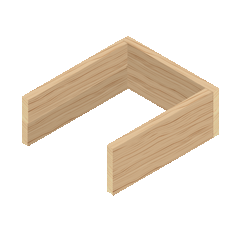Mark out a level patch of land for your compost bin. You don't need to remove the grass. Best not to dig up the ground either as this will disrupt the existing earthworm tunnels in the soil.

Cut your sleepers to size and lay around the perimeter of your compost bin site. Make sure to use Macrocarpa or Trustwood Sleepers, as they are safe to use.

Screw your base layer of sleepers together, using Spax screws or Coach screws.

Add more layers of sleepers until you reach the desired height for your compost bin. The weight of the sleepers should be sufficient to keep them in place but you can fix the layers together with nail plates or vertical battens on the outside.

Attach front panels to the bin and vertical guides inside. These guides should be spaced so there is sufficient room to slide the front panels into the slot.

Cut some extra panels to size and position in the slot to act as a removable front for the compost bin. Now you are ready to start composting!




Getting the compost started:
A layer of compost or topsoil at the base is recommended. A good batch of compost is best when made in layers of differing organic material (in no particular order) such as:
grass and leaf clippings, pea straw, fruit and vegetable peelings, the contents of the vacuum cleaner, small branches, and untreated sawdust. Make sure you cover your compost bin with boards to keep the heat in and speed up the composting process.
Happy compost making!
